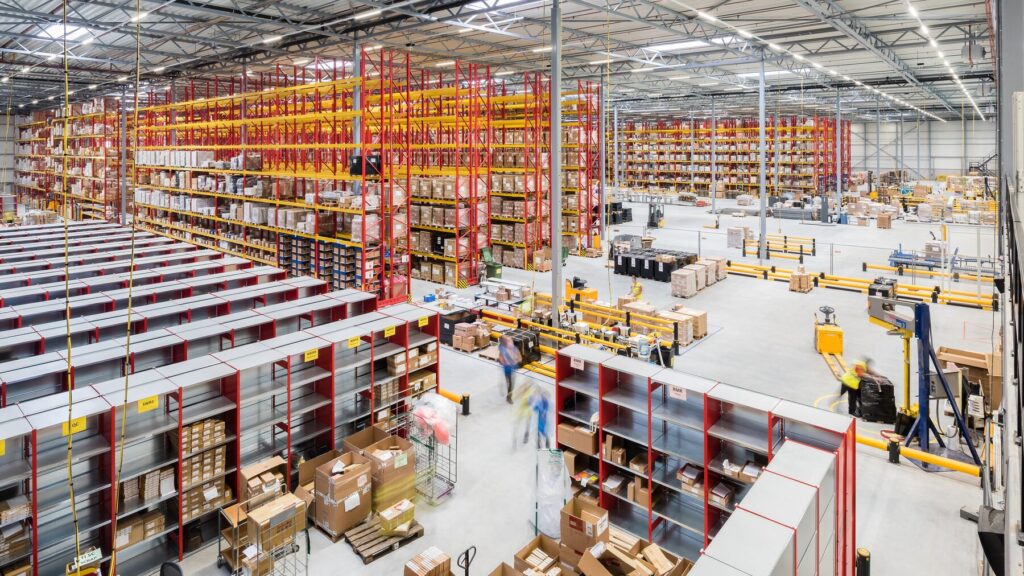Efficient inventory management is one of the fundamental pillars for business success in today’s competitive market. However, one of the most significant challenges faced by organizations is stockouts, a phenomenon that can have deep repercussions on multiple aspects of the business. This article provides a comprehensive analysis of the associated costs, their underlying causes, and the most effective strategies for their prevention and management.
What Are Stockout Costs?
Stockout costs, also referred to as stockout or out-of-stock costs, represent the total financial impact a company experiences when it is unable to meet customer demand due to a lack of available inventory. These costs go beyond simple lost sales, encompassing a broader range of financial and operational consequences.
In today’s business context, these costs can manifest in various ways, including direct sales losses, opportunity costs, additional management expenses, and, significantly, the long-term impact on customer loyalty and brand reputation. A deep understanding of these costs is essential for developing effective inventory management strategies.
Common Causes of Stockouts
Lack of Supply Chain Planning
Inadequate supply chain planning can manifest through several interrelated factors:
- Poor communication between departments leads to operational discoordination, resulting in late or incorrect orders.
- Disintegrated information systems hinder real-time visibility of available and in-transit inventory.
- The absence of standardized inventory management processes creates inconsistencies in stock handling.
Additionally, the lack of clear protocols for emergency situations and the absence of contingency plans can significantly worsen the impact of any supply chain disruptions.
Unexpected or Underestimated Demand
Unexpected demand fluctuations can arise due to various factors:
- Changes in market trends can lead to unforeseen demand spikes.
- Miscalculated seasonal events can quickly deplete available inventory.
- Promotions and marketing campaigns can create demand that exceeds initial forecasts.
- Shifts in consumer behavior, especially in the digital age, can be faster and more dramatic than ever.
Impact of Stockout Costs
Loss of Sales and Customers
The immediate impact of a stockout is reflected in lost sales, but the long-term consequences are even more significant:
- Market research indicates that approximately 70% of consumers will choose to buy from a competitor when faced with a stockout. Even more concerning, about 30% of these customers will not return to the original store. Customer Lifetime Value (CLV) is severely impacted, affecting the future profitability of the business.
Increased Operational Costs
Stockouts trigger a series of additional operational costs:
- Emergency orders often come with significant surcharges.
- Expedited shipping can cost up to three times more than regular transportation.
- Overtime costs for employees to manage these situations increase labor costs.
- Additional administrative resources needed to handle crisis situations raise overhead expenses.
Damage to Company Reputation
In the digital age, the reputational impact can be particularly severe:
- Social media amplifies negative customer experiences quickly.
- Negative online reviews have a lasting effect on brand perception.
- Loss of trust can affect not only out-of-stock products but the entire range of products offered by the company.
How to Calculate Stockout Costs?
The precise calculation of stockout costs requires a detailed analysis of multiple components:
- Lost Sales = (Unmet Demand × Unit Price) + (Lost Profit Margin)
- Additional Operational Costs = Emergency Order Costs + Special Transportation Costs + Overtime
- Customer Impact = (Number of Lost Customers × Average Customer Lifetime Value)
- Administrative Costs = Additional Staff Hours × Hourly Rate
- Total Costs = Sum of all previous components + Estimated Intangible Costs
Strategies to Prevent Stockouts
Implementing Inventory Software
Modern technology offers sophisticated solutions for inventory management:
- Real-time inventory management systems provide instant visibility of stock levels.
- Automated reordering reduces the risk of human error.
- Early warning systems identify potential problems before they become crises.
- Integration with other business systems improves overall coordination.
Accurate Demand Forecasting
Demand forecasting accuracy requires a multifaceted approach:
- Historical data analysis must be combined with identifying current trends.
- Seasonal factors should be considered along with special events and planned promotions.
- The implementation of machine learning techniques can significantly improve prediction accuracy.
Efficient Supplier Management
A strong relationship with suppliers is essential:
- Service level agreements (SLAs) should clearly define expectations and penalties.
- Supplier diversification reduces the risk of dependency on a single source.
- Regular and transparent communication facilitates proactive problem resolution.
Technological Tools to Minimize Stockout Risk
Modern technology offers multiple solutions for effective inventory management:
- Integrated ERP systems provide a holistic view of business operations.
- Warehouse Management Systems (WMS) optimize warehouse operations.
- Predictive analytics solutions identify patterns and trends.
- RFID systems enable real-time tracking of inventory.
- AI platforms automatically optimize inventory levels.
Optimization and Control to Reduce Stockout Costs
To significantly reduce the costs associated with stockouts, companies must focus on the continuous optimization of their processes and the application of rigorous controls. Some final recommendations include:
- Monitor Inventory in Real Time: Use dashboards and automated reports that display inventory status.
- Maintain a Culture of Continuous Improvement: Conduct internal audits and periodic evaluations to identify bottlenecks or inefficient processes.
- Train the Workforce: Provide training for all areas involved in the supply chain, promoting collaboration and information exchange.
- Define Contingency Plans: For scenarios of unusual demand, transportation delays, weather issues, or other potential disruptions that may affect supply.
Stockouts not only jeopardize immediate revenue but also damage customer trust and erode the company’s image. However, with solid planning, more accurate demand forecasting, the adoption of specialized technology, and continuous process optimization, it is possible to maintain proper stock levels and provide quality service that translates into customer loyalty and long-term sustainable growth.
Effective management of stockout costs requires a continuous commitment to operational excellence. Companies that implement comprehensive strategies not only minimize financial losses but also strengthen their competitive position and improve customer satisfaction. Investing in technology, processes, and trained personnel translates into higher operational efficiency and better long-term profitability.
